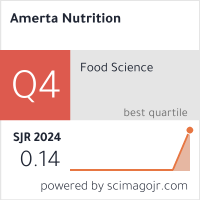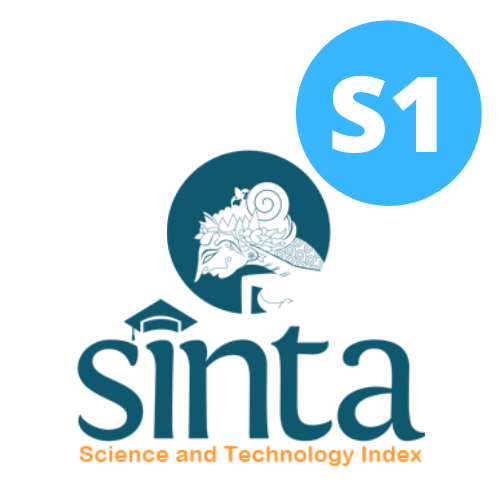The Role of Breastfeeding in Preventing Iron Deficiency Anemia: A Long-Term Perspective
Backgorund: Iron deficiency anemia (IDA) is a common disease in infants caused by a lack of iron. IDA can affect the growth and development of newborns. Therefore, prevention activities are necessary.
Objectives: This review discusses how breastfeeding can help prevent iron deficiency early in life and may provide long-term benefits in reducing the incidence of anemia. In addition, the review discusses strategies for introducing iron-rich complementary foods and offers policy recommendations to support breastfeeding as a preventive measure against IDA.
Methods: The research was designed as a literature review, examining several articles from three online databases: Google Scholar, PubMed, and ScienceDirect.
Discussions: Breastfeeding provides essential nutrients, and breast milk helps lower the occasion of IDA. Although the iron content in breast milk is low, it is easily absorbed due to a component called lactoferrin. Vitamin C in breast milk also helps most effectively to increase iron absorption. Providing iron-rich complementary foods can help meet the daily iron needs of infants and children. The percentage of mothers who do not practice exclusive breastfeeding remains high. This is attributed to various factors, including awareness of breastfeeding's importance, economic challenges, and lack of support for exclusive breastfeeding.
Conclusion: Exclusive breastfeeding can provide enough iron for infants for the first four to six months to avoid IDA. However, to continue preventing IDA after six months of age, supplemental foods that include iron are crucial. Support from various parties is essential to promoting and increasing exclusive breastfeeding.
World Health Organization. Anaemia in women and children. Noncommunicable Dis. 2, 1–7 (2021).
Cappellini, M. D., Musallam, K. M. & Taher, A. T. Iron deficiency anaemia revisited. Journal of Internal Medicine. 287 (2), 153-170 (2020).
Abbaspour, N., Hurrell, R. & Kelishadi, R. Review on iron and its importance for human health. Journal of Research in Medical Sciences. 19 (2), 164-174 (2014).
Sandjaja, S. et al. Food consumption and nutritional and biochemical status of 0·5-12-year-old Indonesian children: The SEANUTS study. Br. J. Nutr. 110, 11-20 (2013).
Aksu, T. & Ünal, Ş. Iron Deficiency Anemia in Infancy, Childhood, and Adolescence. Turkish Archives of Pediatrics. 58 (4), 358-362 (2023).
Sungkar, A. et al. A Life Course Approach to the Prevention of Iron Deficiency Anemia in Indonesia. Nutrients. 14 (2), 277 (2022).
Miniello, V. L. et al. Complementary feeding and iron status: “the unbearable lightness of being” infants. Nutrients. 13 (12), 4201 (2021).
WHO. WHO/PAHO. Guiding principles for complementary feeding of the breastfed child. (2000). Available online at https://iris.paho.org/handle/10665.2/752?locale-attribute=en (Accessed: 16th November 2024)
Qasem, W. A. & Friel, J. K. An Overview of Iron in Term Breast-Fed Infants. Clin. Med. Insights Pediatr. 9, 9-79 (2015).
Cai C., Harding SV & Freil JK . Breast Milk Iron Concentrations may be Lower than Previously Reported: Implications for Exclusively Breastfed Infants. Matern. Pediatr. Nutr. 2, 1-4 (2016).
Ziegler, E. E., Nelson, S. E. & Jeter, J. M. Iron status of breastfed infants is improved equally by medicinal iron and iron-fortified cereal. Am. J. Clin. Nutr. 90 (1), 76-87 (2009).
Lozoff, B. et al. Long-lasting neural and behavioral effects of iron deficiency in infancy. Nutrition Reviews. 64, S34-S91 (2006).
Lönnerdal, B., Georgieff, M. K. & Hernell, O. Developmental physiology of iron absorption, homeostasis, and metabolism in the healthy term infant. J. Pediatr. 167, S8-S14 (2015).
Lönnerdal, B., Keen, C. L. & Hurley, L. S. Iron, copper, zinc, and manganese in milk. Annual review of nutrition. 1, 149-74 (1981).
Lönnerdal, B. & Iyer, S. Lactoferrin: Molecular structure and biological function. Annual Review of Nutrition. 15, 93-110 (1995).
Suzuki, Y. A., Shin, K. & Lönnerdal, B. Molecular cloning and functional expression of a human intestinal lactoferrin receptor. Biochemistry. 40, 15771-9 (2001).
Hallberg, L., Rossander-Hultén, L., Brune, M. & Gleerup, A. Bioavailability in man of iron in human milk and cow’s milk in relation to their calcium contents. Pediatr. Res. 31 (5), 524-7 (1992).
Lönnerdal, B. Calcium and iron absorption - Mechanisms and public health relevance. Int. J. Vitam. Nutr. Res. 80, 293-9 (2010).
Davidsson, L., Kastenmayer, P., Yuen, M., Lönnerdal, B. & Hurrell, R. F. Influence of lactoferrin on iron absorption from human milk in infants. Pediatr. Res. 35, 117-24 (1994).
Anghel, L., Radulescu, A. & Erhan, R. V. Structural aspects of human lactoferrin in the iron-binding process studied by molecular dynamics and small-angle neutron scattering. Eur. Phys. J. E. 41 (9), 109 (2018).
Lu, J. et al. Antibacterial and antibiofilm activity of the human breast milk glycoprotein lactoferrin against Group B Streptococcus. Chembiochem 22, 2124–2133 (2022).
Trend, S. et al. Antimicrobial protein and peptide concentrations and activity in human breast milk consumed by preterm infants at risk of late-onset neonatal sepsis. PLoS One. 10 (2), e0118038 (2015).
Manzoni, P. et al. Bovine lactoferrin supplementation for prevention of necrotizing enterocolitis in very-low-birth-weight neonates: A randomized clinical trial. Early Hum. Dev. 90, S60-5 (2014).
Hering, N. A. et al. Lactoferrin protects against intestinal inflammation and bacteria-induced barrier dysfunction in vitro. Ann. N. Y. Acad. Sci. 1405 (1), 177-188 (2017).
Lane, D. J. R. & Richardson, D. R. The active role of vitamin C in mammalian iron metabolism: Much more than just enhanced iron absorption! Free Radical Biology and Medicine. 75, 69-83 (2014).
Ganasen, M. et al. Structural basis for promotion of duodenal iron absorption by enteric ferric reductase with ascorbate. Commun. Biol. 1, 120 (2018).
Tawfeek, H. I., Muhyaddin, O. M., Al-Sanwi, H. I. & Al-Baety, N. Effect of maternal dietary vitamin C intake on the level of vitamin C in breastmilk among nursing mothers in Baghdad, Iraq. Food Nutr. Bull. 23 (2), 244-7 (2002).
Czosnykowska-Łukacka, M., Lis-Kuberka, J., Królak-Olejnik, B. & Orczyk-Pawiłowicz, M. Changes in Human Milk Immunoglobulin Profile During Prolonged Lactation. Front. Pediatr. 8, 428 (2020).
Nadimpalli, M. L. et al. Can breastfeeding protect against antimicrobial resistance? BMC Med. 18, 392 (2020).
Akhter, H., Aziz, F., Ullah, F. R., Ahsan, M. & Islam, S. N. Immunoglobulins content in colostrum, transitional and mature milk of Bangladeshi mothers: Influence of parity and sociodemographic characteristics. J. Mother Child 24, 8-15(2021).
Fatimah et al. The role of exclusive breastfeeding on sIgA and lactoferrin levels in toddlers suffering from Acute Respiratory Infection: A cross-sectional study. Ann. Med. Surg. 77, 103644 (2022).
Ganz, T. Iron and infection. Int. J. Hematol. 107 (1), 7-15 (2018).
Duijts, L., Jaddoe, V. W. V., Hofman, A. & Moll, H. A. Prolonged and exclusive breastfeeding reduces the risk of infectious diseases in infancy. Pediatrics 126 (1), 19-25 (2010).
Shaw, J. G. & Friedman, J. F. Iron deficiency anemia: Focus on infectious diseases in lesser developed countries. Anemia. 2011, 260380 (2011).
WHO. Infant and Young Child Feeding (2013). Available online at https://iris.who.int/handle/10665/44117. (Accessed at 12th November 2024)
Socha, P. c. Metabolic Programming, Breastfeeding And Later Risk Of Obesity (2015). Available online at https://ebook.ecog-obesity.eu/chapter-nutrition-food-choices-eating-behavior/metabolic-programming-breastfeeding-and-later-risk-of-obesity/?gad_source=1&gclid=CjwKCAiA0rW6BhAcEiwAQH28IjHrKEalGLQb6cQeyOEc_eCRXnzEvuhsSB8LbzvQWGc_M_tHLQoPORoCslYQAvD_BwE. (Accessed at 12th November 2024)
Fall, C. H. D. & Kumaran, K. Metabolic programming in early life in humans. Philosophical Transactions of the Royal Society B: Biological Sciences. 374 (1770), 20180123 (2019).
Magadum, A., Sowjanya GT, Koujalagi, M. & Banapurmath, C. A study of association between breastfeeding and iron-deficiency anemia status in infants and young children between 0 and 2 years. Indian J. Heal. Sci. Biomed. Res. 14,60-65 (2021).
Harder, T., Bergmann, R., Kallischnigg, G. & Plagemann, A. Duration of breastfeeding and risk of overweight: A meta-analysis. Am. J. Epidemiol. 162, 397-403(2005).
Woo, J. G. & Martin, L. J. Does Breastfeeding Protect Against Childhood Obesity? Moving Beyond Observational Evidence. Current obesity reports. 4 (2), 207-16 (2015).
Mamun, A. Al et al. Breastfeeding is protective to diabetes risk in young adults: a longitudinal study. Acta Diabetol. 52 (5), 837-44 (2015).
Horta, B. L., Loret De Mola, C. & Victora, C. G. Long-term consequences of breastfeeding on cholesterol, obesity, systolic blood pressure and type 2 diabetes: A systematic review and meta-analysis. Acta Paediatrica, International Journal of Paediatrics. 104, 30-7 (2015).
Cai, S. et al. Infant feeding effects on early neurocognitive development in asian children. Am. J. Clin. Nutr. 101, 326-36 (2015).
Lee, H. et al. Effect of breastfeeding duration on cognitive development in infants: 3-year follow-up study. J. Korean Med. Sci. 31, 579-84 (2016).
Modak, A., Ronghe, V. & Gomase, K. P. The Psychological Benefits of Breastfeeding: Fostering Maternal Well-Being and Child Development. Cureus. 15 (10), e46730 (2023).
Dietary Guidelines Advisory Committee. Scientific Report of the 2020 Dietary Guidelines Advisory Committee: Advisory Report to the Secretary of Agriculture and the Secretary of Health and Human Services. U.S. Dep. Agric. Agric. Res. Serv. 1–835 (2020).
Domellöf, M. et al. Iron requirements of infants and toddlers. J. Pediatr. Gastroenterol. Nutr. 58, 119-29 (2014).
Macharia-Mutie, C. W. et al. Maize porridge enriched with a micronutrient powder containing low-dose iron as NaFeEDTA but not amaranth grain flour reduces anemia and iron deficiency in kenyan preschool children. J. Nutr. 142 (9), 1756-63 (2012).
Barth-Jaeggi, T. et al. In-home fortification with 2.5mg iron as NaFeEDTA does not reduce anaemia but increases weight gain: A randomised controlled trial in Kenyan infants. Matern. Child Nutr. 11, 151–162 (2015).
WHO. Guideline: Use of Multiple Micronutrient Powders for Home Fortification of Foods Consumed by Infants and Children 6–23 Months of Age. (World Health Organization, 2011).
Sittimol, A., Saengpanit, P., Vatthana, N. & Rojmahamongkol, P. Prevalence of iron deficiency anemia in exclusively breastfed infants after a 5-month iron supplementation. Sci. Rep. 14, 23924 (2024).
Sunardi, D., Bardosono, S., Basrowi, R. W., Wasito, E. & Vandenplas, Y. Dietary determinants of anemia in children aged 6–36 months: A cross-sectional study in Indonesia. Nutrients. 13, 1–10 (2021).
Jaeggi, T. et al. Iron fortification adversely affects the gut microbiome, increases pathogen abundance and induces intestinal inflammation in Kenyan infants. Gut. 64, 731-42 (2015).
Lind, T., Seswandhana, R., Persson, L. Å. & Lönnerdal, B. Iron supplementation of iron-replete Indonesian infants is associated with reduced weight-for-age. Acta Paediatr. Int. J. Paediatr. 97, 770-5 (2008).
Paganini, D. et al. Iron-containing micronutrient powders modify the effect of oral antibiotics on the infant gut microbiome and increase post-Antibiotic diarrhoea risk: A controlled study in Kenya. Gut. 68 (4), 645-653 (2019).
Centers for Disease Control and Prevention. Recommendations to Prevent and Control Iron Deficiency in the United States. MMWR Recomm Rep 47, 1–25 (1998).
World Health Organization. WHO guideline: daily iron supplementation in infants and children. (World Heal. Organ., 2016).
Baker, R. D. et al. Clinical report - Diagnosis and prevention of iron deficiency and iron-deficiency anemia in infants and young children (0-3 years of age). Pediatrics 126 (5), 1040–1050 (2010).
Yorita, E., Anggraini, J. D., Yanniarti, S., Burhan, R. & Rina, R. Early Initiation of Breastfeeding Can Accelerate Uterine Involution in Postpartum Women. Contag. Sci. Period. J. Public Heal. Coast. Heal. 5, 1017-1025 (2023).
Yorita, E., Yanniarti, S. & Istiarika, I. Oxytocin Massage Can Increase Breastfeeding Production in Postpartum Mothers. Contag. Sci. Period. J. Public Heal. Coast. Heal. 5, 673-682 (2023).
Erickson, E. N., Carter, C. S. & Emeis, C. L. Oxytocin, Vasopressin and Prolactin in New Breastfeeding Mothers: Relationship to Clinical Characteristics and Infant Weight Loss. J. Hum. Lact. 36, 136-145 (2020).
Al Sabati, S. Y. & Mousa, O. Effect of Early Initiation of Breastfeeding on the Uterine Consistency and the Amount of Vaginal Blood Loss during Early Postpartum Period. Nurs. Prim. Care. 3 (3), 1-6 (2019).
Institute of Medicine. Nutrition During Lactation:Report of Subcommittee on Nutrition During Lactation of the Committee on Nutritional Status During Pregnancy and Lactation. Pediatrics. 21 (1991).
Sormin, E., Siagian, C., Nadeak, B., Juwita, C. P. & Sumiyati, . Analysis of Iron (Fe) Content in Breast Milk of Breastfeeding Mothers with Level Anemia Normal, Mild and Moderate. Asian J. Appl. Chem. Res. 15, 20–27 (2024).
Amano, I. & Murakami, A. Prevalence of infant and maternal anemia during the lactation period in Japan. Pediatr. Int. 61 (5), 495-503 (2019).
Chilot, D. et al. Anaemia among lactating and non-lactating women in low-income and middle-income countries: A comparative cross-sectional study. BMJ Open. 13 (5), e069851 (2023).
WHO. WHO Recommendations for Care of the Preterm or Low-Birth-Weight Infant. Gesundheitswesen (World Health Organization, 2022).
Joo, E. Y., Kim, K. Y., Kim, D. H., Lee, J. E. & Kim, S. K. Iron deficiency anemia in infants and toddlers. Blood Res. 51, 268–273 (2016).
Berglund, S., Westrup, B. & Domellöf, M. Iron supplements reduce the risk of iron deficiency anemia in marginally low birth weight infants. Pediatrics 126, e874-83(2010).
Joy, R. et al. Early versus late enteral prophylactic iron supplementation in preterm very low birth weight infants: A randomised controlled trial. Arch. Dis. Child. Fetal Neonatal Ed. 99, F105-9 (2014).
Kumar, A., Rai, A. K., Basu, S., Dash, D. & Singh, J. S. Cord blood and breast milk iron status in maternal anemia. Pediatrics 121 (3), e673-7 (2008).
Abioye, A. I. et al. Maternal anemia type during pregnancy is associated with anemia risk among offspring during infancy. Pediatr. Res. 86 (3), 396–402 (2019).
Bothwell, T. H. Iron requirements in pregnancy and strategies to meet them. in American Journal of Clinical Nutrition. 7, 257S-264S (2000).
WHO. Guideline Iron SUPPLEMENTATION in Postpartum Women. (World Health Organization, 2016).
Nadiyah, Dewanti, L. P., Mulyani, E. Y. & Jus’at, I. Nutritional anemia: Limitations and consequences of Indonesian intervention policy restricted to iron and folic acid. Asia Pac. J. Clin. Nutr. 29, S55-S73 (2020).
Dainty, J. R., Berry, R., Lynch, S. R., Harvey, L. J. & Fairweather-Tait, S. J. Estimation of dietary iron bioavailability from food iron intake and iron status. PLoS One. 9, e111824 (2014).
Hassan, M. S. & Hossain, M. M. Challenges for influencing exclusive breastfeeding practice among lactating mothers with infants aged 0–6 months in Borama District, Somaliland: A cross-sectional study. Heal. Sci. Reports 6, e1693 (2023).
Basrowi, R. W., Sulistomo, A. W., Adi, N. P., Widyahening, I. S. & Vandenplas, Y. Breastfeeding knowledge, attitude, and practice among white-collar and blue-collar workers in Indonesia. J. Korean Med. Sci. 34, e284 (2019).
Rahmita, H., Fitria, N. & Mardiya, R. Workplace Support For Breastfeeding Mothers In Indonesia : A Scooping Review. J. Glob. Res. Public Heal. 8, 137-144 (2023).
Bardosono, S., Hildayani, R., Chandra, D. N., Basrowi, R. W. & Wibowo, Y. The knowledge retention after continuing health education among midwives in Indonesia. Med. J. Indones. 27, 128–33 (2018).
Lowe, N. K. The surgeon general’s call to action to support breastfeeding. JOGNN - Journal of Obstetric, Gynecologic, and Neonatal Nursing. 40, (2011).
WHO. World Breastfeeding Week: UNICEF and WHO urge greater support for breastfeeding in Indonesia as rates decline during COVID-19. Available online at https://www.who.int/indonesia/news/detail/01-08-2022-world-breastfeeding-week--unicef-and-who-urge-greater-support-for-breastfeeding-in-indonesia-as-rates-decline-during-covid-19#:~:text=According to data from the,per cent decline from 2019. (Accessed at 13th November 2024)
UNICEF & WHO. Global Breastfeeding Scorecard 2023 Rates Of Breastfeeding Increase Around The World Through Improved Protection And Support. Available online at https://www.unicef.org/documents/global-breastfeeding-scorecard-2023. (Accessed at 13th November 2024)
President of Indonesia. PERATURAN PEMERINTAH REPUBLIK INDONESIA NOMOR 33 TAHUN 2012 TENTANG PEMBERIAN AIR SUSU IBU EKSKLUSIF. (2012).
UNICEF & WHO. Nurturing the Health and Wealth of Nations: The Investment Case for Breastfeeding. (UNICEF, WHO, 2017).
UNICEF & WHO. Implementation Guidance on Counselling Women to Improve Breastfeeding Practices. (UNICEF, 2021).
Kornides, M. & Kitsantas, P. Evaluation of breastfeeding promotion, support, and knowledge of benefits on breastfeeding outcomes. J. Child Heal. Care. 17, 264-73 (2013).
Kim, H. J. et al. Is it possible to predict the iron status from an infant’s diet history? Pediatr. Gastroenterol. Hepatol. Nutr. 16, (2013).
Lukito, W. & Wahlqvist, M. L. Intersectoral and eco-nutritional approaches to resolve persistent anemia in Indonesia. Asia Pac. J. Clin. Nutr. 29, 95–103 (2020).
Arikpo, D., Edet, E. S., Chibuzor, M. T., Odey, F. & Caldwell, D. M. Educational interventions for improving primary caregiver complementary feeding practices for children aged 24 months and under. Cochrane Database of Systematic Reviews. 5 (5), CD011768 (2018).
Basrowi, R. W., Zulfiqqar, A. & Sitorus, N. L. Anemia in Breastfeeding Women and Its Impact on Offspring’s Health in Indonesia: A Narrative Review. Nutrients 16, 1–11 (2024).
Copyright (c) 2025 Amerta Nutrition

This work is licensed under a Creative Commons Attribution-ShareAlike 4.0 International License.
AMERTA NUTR by Unair is licensed under a Creative Commons Attribution-ShareAlike 4.0 International License.
1. The journal allows the author to hold the copyright of the article without restrictions.
2. The journal allows the author(s) to retain publishing rights without restrictions
3. The legal formal aspect of journal publication accessibility refers to Creative Commons Attribution Share-Alike (CC BY-SA).
4. The Creative Commons Attribution Share-Alike (CC BY-SA) license allows re-distribution and re-use of a licensed work on the conditions that the creator is appropriately credited and that any derivative work is made available under "the same, similar or a compatible license”. Other than the conditions mentioned above, the editorial board is not responsible for copyright violation.








































